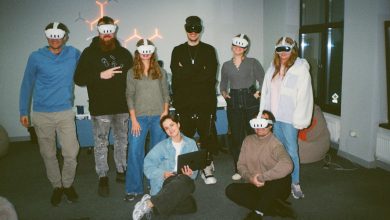
In late November of 2022, conversations around generative AI—ChatGPT in particular—have flooded beyond the tech space as companies, brands, and organizations all over the world are becoming more curious about how they can apply this innovation to their workspace.
Like other major technological innovations, some are skeptical about its adoption, but generative AI is more than a passing trend: it’s a key pillar to automating the future of businesses across industries. In its 2023 predictions, the analyst firm, IDC, referred to genAI and ChatGPT as having the same transformative effect on how we work and live as computers, smartphones, and wifi, and that they are leading us into a new era of Intelligent Automation. (IDC Directions, March 2023)
What is generative AI?
Even though generative AI has been highly publicized, there’s still a multitude of questions around the subject, especially the most basic ones like “What is it?”
Essentially, generative AI is a category of AI models that generate new outputs based on their learned data. It runs on generative adversarial networks (GAN), a type of deep learning, and can be applied to many types of content, including text, audio, and images. ChatGPT, specifically, is a conversational application that has been built on a large language model (LLM), which is a type of generative AI.
How can generative AI apply to your business?
Although much of the early conversation happened within the tech and media spaces, generative AI can perform tasks that are applicable across numerous industries within the commercial and regulated spheres, making it the next step in human employee amplification.
In December 2022, Brian Burke, Arun Chandrasekaran, Svetlana Sicular of Gartner Innovation Insight for Generative AI shared, “Generative AI has developed over the past few years; however, in the past 12 months, foundation models have been hyped for the ability to augment creative work, attracting significant investment from venture capitalists.”
As generative AI continues to become more widely adopted and improve with the orchestration of both public large language models as well as domain-specific large language models (DSLLMs), we’ll see more and more industries incorporate the technology within their specific workflows and use cases, such as talent acquisition, law enforcement, sports, and advertising and entertainment.
What are the definitive use cases for your industry?
Some key applications we have already seen in different industries include:
● Talent Acquisition: Using conversational AI for recruiting can engage talent during the application process. A combination of large-language models and domain-specific knowledge graphs can ask or answer job-specific questions in any language while enhancing the talent profile to best position the applicant for the job opportunity.
● Law Enforcement: By storing data in a secure, domain-specific, large-language model, law enforcement agencies can quickly and accurately summarize and communicate policies, recommendations, and mandates as opposed to limiting training and compliance limited to documents and videos.
● Sports: Leveraging program scheduling and in-game data with natural language processing and AI-generated text and voice enables media partners to produce AI-powered sports commentary, play-by-play, and pre-and post-game updates in multiple languages.
● Advertising and Entertainment: The ability to quickly generate new content (including imagery, video, audio, scripts, copy, and more) helps content creators and owners keep up with the constant demand while increasing accessibility and their audience reach.
These are only a few examples of generative AI’s capabilities, however, once you discover how your organization could benefit from this technology, it’s easier to find out next steps, including cost and time.
As far as finding use cases for your specific brand, I would recommend researching and paying attention to what other players are doing. Like any strategic initiative, a strategy around the generative AI should include a cohesive team, mission, business goals, a roadmap inclusive of both product and marketing efforts, and agreed-upon metrics. Companies need not overcomplicate this yet they don’t want to be late to this next phase either—my biggest advice is to start having internal conversations if you’re not already.
What to know about implementing generative AI
Two major factors in adopting any technology are its cost and the amount of time it takes to implement. This ultimately comes down to which use cases your business is using generative AI for, and the scale of the task. Any enterprise company will want to work with a provider that can help them at that level. The generative AI you need could be essentially “off the shelf” or may require custom workflows, new DSLLMs, etc.—it really depends. I believe it’s always best to start with what you have today and evolve from there. There’s rarely a need to “rip and replace.”
Given its accessibility and flexible application for organizations of all sizes, generative AI has the opportunity to benefit numerous industries, but not just at the enterprise level—we can see it become more accessible and affordable for every organization.



